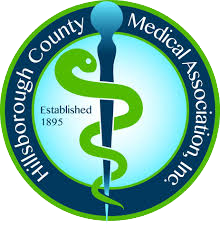Orthopaedic conditions significantly impact the quality of life of many individuals. Whether it is a sports injury, arthritis, or degenerative joint disease, finding effective treatments is crucial. In recent years, stem cell therapy has emerged as a promising option for many people seeking orthopaedic care.
The Basics of Stem Cell Therapy
Stem cell therapy is a groundbreaking approach in regenerative medicine, harnessing the extraordinary potential of undifferentiated cells. These cells possess a remarkable capacity to metamorphose into diverse cell types within the human body. In orthopaedics, this transformative ability becomes a powerful tool for promoting healing and regeneration in compromised tissues and joints. By delving into the basics of stem cell therapy, we uncover a revolutionary method that holds promise for enhancing the body’s natural healing processes.
Targeting Orthopaedic Challenges
Individuals grappling with orthopaedic challenges such as inflammation and restricted mobility can now explore a promising avenue for relief through the advancements in stem cell therapy. This groundbreaking approach diverges from conventional methods by targeting the underlying causes of orthopaedic issues, aiming for comprehensive resolution rather than surface-level symptom management. And unlike traditional surgical interventions, stem cell therapy is often a minimally invasive procedure. This not only translates to a reduction in associated risks but also minimizes downtime, providing patients with a more efficient and patient-friendly solution to their orthopaedic concerns.
Advantages of Stem Cell Therapy
Stem cell therapy can help reduce inflammation and regenerate tissue. Stem cells possess anti-inflammatory properties, aiding in the reduction of swelling and discomfort associated with orthopaedic conditions. Also, by promoting the regeneration of damaged tissues, stem cell therapy supports the body’s natural healing processes, potentially improving overall joint function.
Navigating the Decision for Stem Cell Therapy
Choosing the right treatment for orthopaedic issues is a significant decision, and understanding the nuances of stem cell therapy is crucial. Some factors to consider include:
- Patient eligibility – Not everyone may be an ideal candidate for stem cell therapy. Patient eligibility is impacted by overall health, medical history, and the specific orthopaedic condition.
- Treatment process – Understanding the stem cell therapy process is vital for patients. Talk with your doctor about what to expect, from the initial consultation to the procedure and post-treatment care.
- Expected outcomes – While stem cell therapy shows promise, it is essential to set realistic expectations. Discuss with your doctor the potential outcomes based on the specific orthopaedic condition.
- Post-treatment care – Post-treatment care is integral to the success of stem cell therapy. Talk with your doctor about what post-treatment care you will need.
Choosing Tampa Orthopaedic and Sports Medicine Group
Stem cell therapy in orthopaedics represents a beacon of hope for people seeking alternatives to traditional treatments. Tampa Orthopaedic and Sports Medicine Group is at the forefront of this medical innovation, offering tailored solutions for residents in the Tampa, Florida, area aiming to regain control of their orthopaedic health. For more information on how stem cell therapy can benefit you, contact Tampa Orthopaedic and Sports Medicine Group today.












